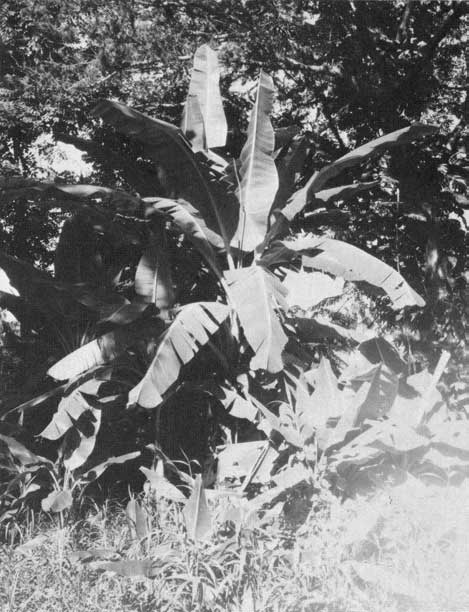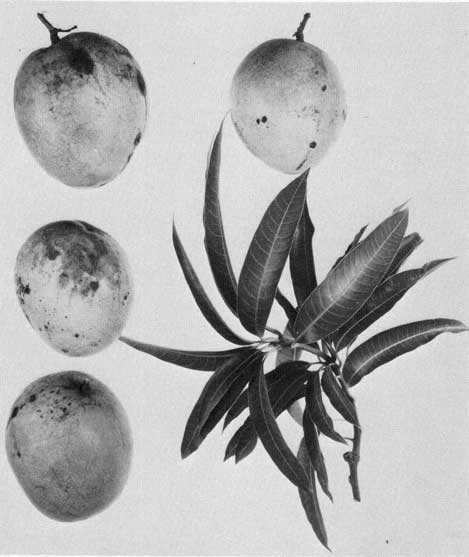|
From a taxonomic standpoint, our selection of the greatest fruits is not restricted to a few families or to closely related families. Two families, Palmae and Rutaceae (Citrus), are represented by three species each, and one family, Anacardiaceae, is represented by two. It is noteworthy that the pineapple, which we consider to be one of the greatest fruits, is also one of the very few edible fruits in the family Bromeliaceae. Good shipping and keeping qualities probably help make fruit important. Although many of the great fruits do not keep well when ripe, they can be picked mature, shipped long distances, and then ripened. Others, such as guava, are normally picked when nearly ripe and are seldom shipped, although products made from them are shipped everywhere. Still, some important fruits (breadfruit, for example) do not play an important role in commerce. 
Figure 6.-Banana, the greatest and most ubiquitous tropical fruit. |
Probably, ease of cultivation is an important
factor in making a fruit great. Some of the best are grown not only in great
plantations but also in dooryards-for example, banana (fig. 6), mango (fig.
7), and citrus. Some great fruits are more difficult to grow, however, or
are not widely adapted-for example, pineapple (fig. 8), Brazil nut, and cacao. We are convinced that some fruits are great because of circumstance. These have been selected purposefully by man for development and have been systematically grown and marketed. The banana and citrus fruits are examples. 
Figure 7.-Mango, a peach of a fruit for the Tropics. |